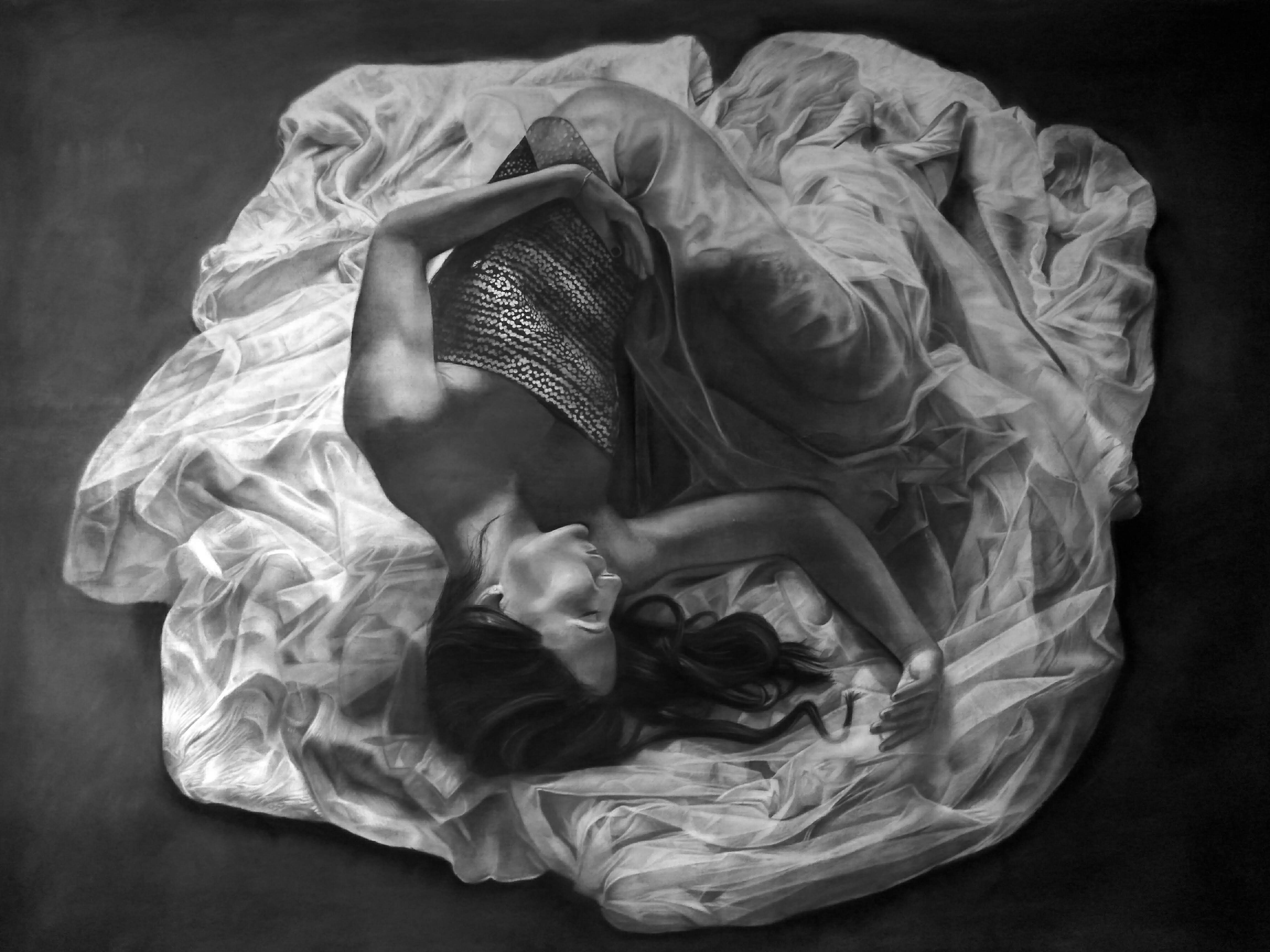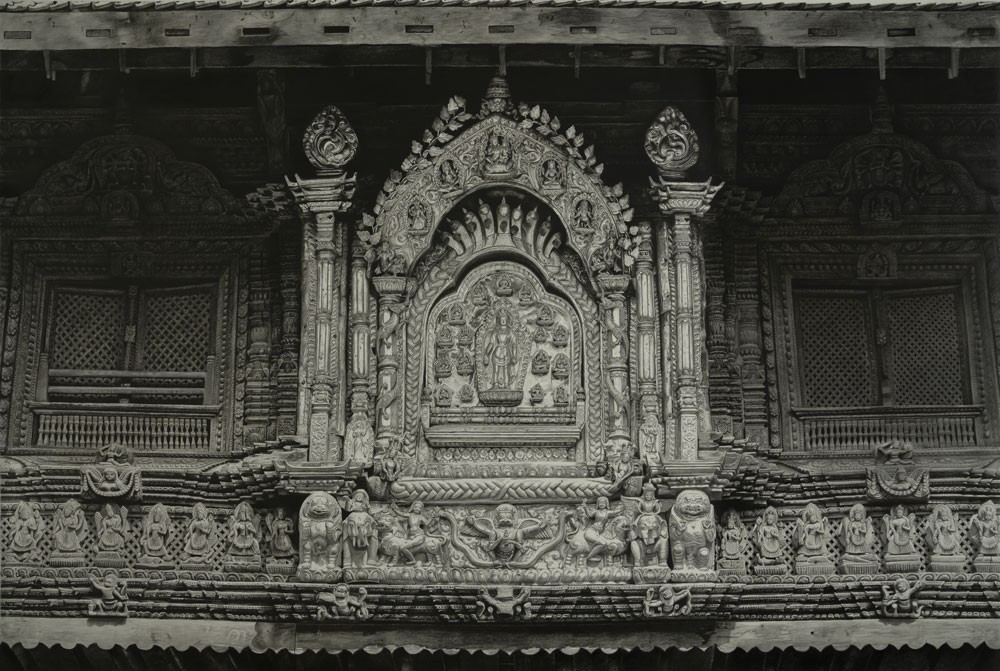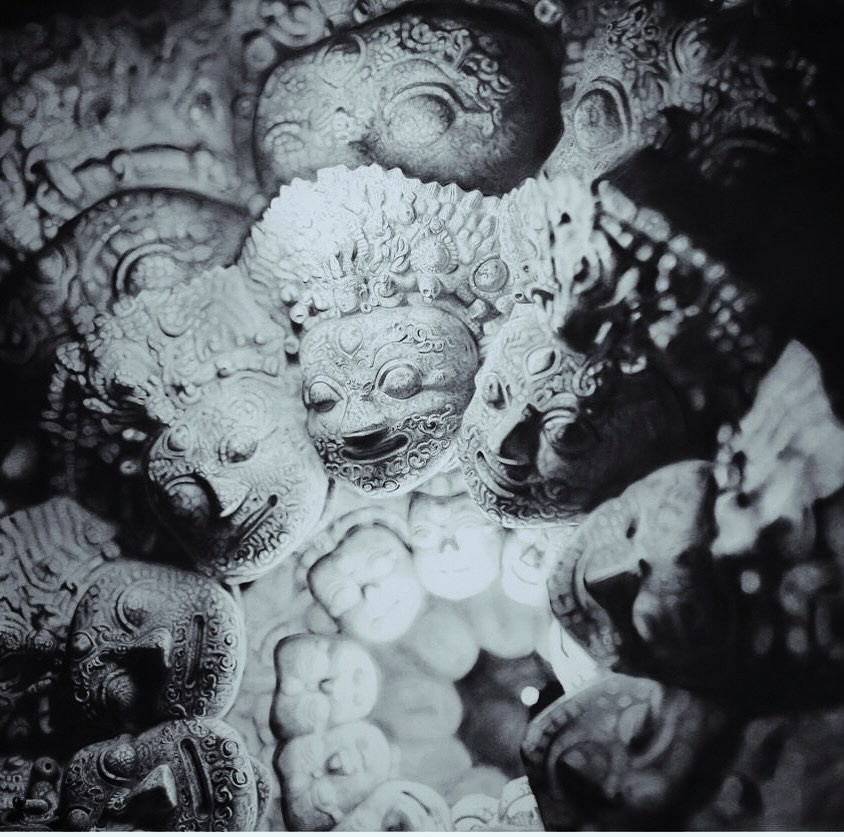About
Born in 1999, Manish is currently a student of architecture at the Pulchowk Campus of Tribhuvan University, but his passion is the art of realism. This perhaps less familiar form art relies on the execution of his talents in drawing an image that looks almost as if it were a photograph. From a distance one might easily consider his images are taken with a camera, but look a little closer and it’s clear the pen of an artist is at work. The photograph portrays the real world, but the drawing reflects a more complex reality.
His roots are from the rural farming community of Bhaktapur and, like many families, the land is now being consumed by development to accommodate the rising population of the valley. His father was a mason and builder, and his grandfather a farmer, but he is drawn in a different direction. He has long held a fascination for his own Newari culture, and is sad that so much history is being lost in the drive for the modern – the once green, leafy lanes lost to the environment that results from the rush of contemporary life.
As a student of architecture and with a passion for Newari art, he is keen to integrate these two themes in his future work. He feels that for many there is a lack of respect across the community at large, which is consumed by the need to survive the urban life that shuts the door to an appreciation of what is being lost. Some of his images seek to address this conundrum, by prompting the viewer not only to respect his contemporary drawing, but also the work of the original craftsman who created the piece so many years ago.
As a young child he did not have a particularly strong passion for the watercolour that he was taught at school. His artistic flair developed around the time of 5th grade, and later at Bachelor level he taught himself charcoal and graphite. He readily admits that his interest was aroused by looking on the internet as it opened new windows on a world beyond the valley. “If they can do it, then so can I!” became a mantra and inspiration to go further; he was and still is determined to be always top of the class. He considers he is only half way along this path, despite the fact that some are suggesting he is already a ‘hyper-realist’ on his artistic journey.
Some of his latest images are of human faces, where the detail and work involved is amazing. He works thus far in black and white, and his most notable piece is of the Eight Astha Matrikas and accompanying imagery set around a void that illustrates the ‘emptiness’ or ‘nothingness’ that manifests in many religious themes. The view is ‘looking downwards’ – perhaps as seen by the gods. It seeks to remind the admirers that the torana images of the matrikas are there to protect the community (and the individual) from the so-called “dangerous demons”. It makes a powerful impression, set in the MoNA Museum, in subtle light, and is one of his most satisfying works to date.
As for influences, he has been particularly impressed by the facial line drawings and work of Emanuele Dascanio and Jono Dry, whom he ‘discovered’ from the internet.
He would also like to acknowledge the help, support and encouragement given by Prity Dhungana, who is also studying with him now.
During our conversation, Dhoju recalled that many restoration projects across the valley have large budgets, but that this is not the main story. The restoration of the Nyatapola Temple in Bhaktapur some years ago was massively aided by the free labour of devotees, artisans, passionate members of the community, and many folks who just wanted to preserve and enhance their city. The actual money spent was only half of the budget set aside. He hopes that, through his studies of architecture and his inspiration as an artist, he (and other Nepalese craftsmen) can help to build a better way of integrating culture, history and heritage with the need for progress.
He has a studio at the Kathmandu Guest House Arthouse and looks forward to developing his career as an artist in future.








